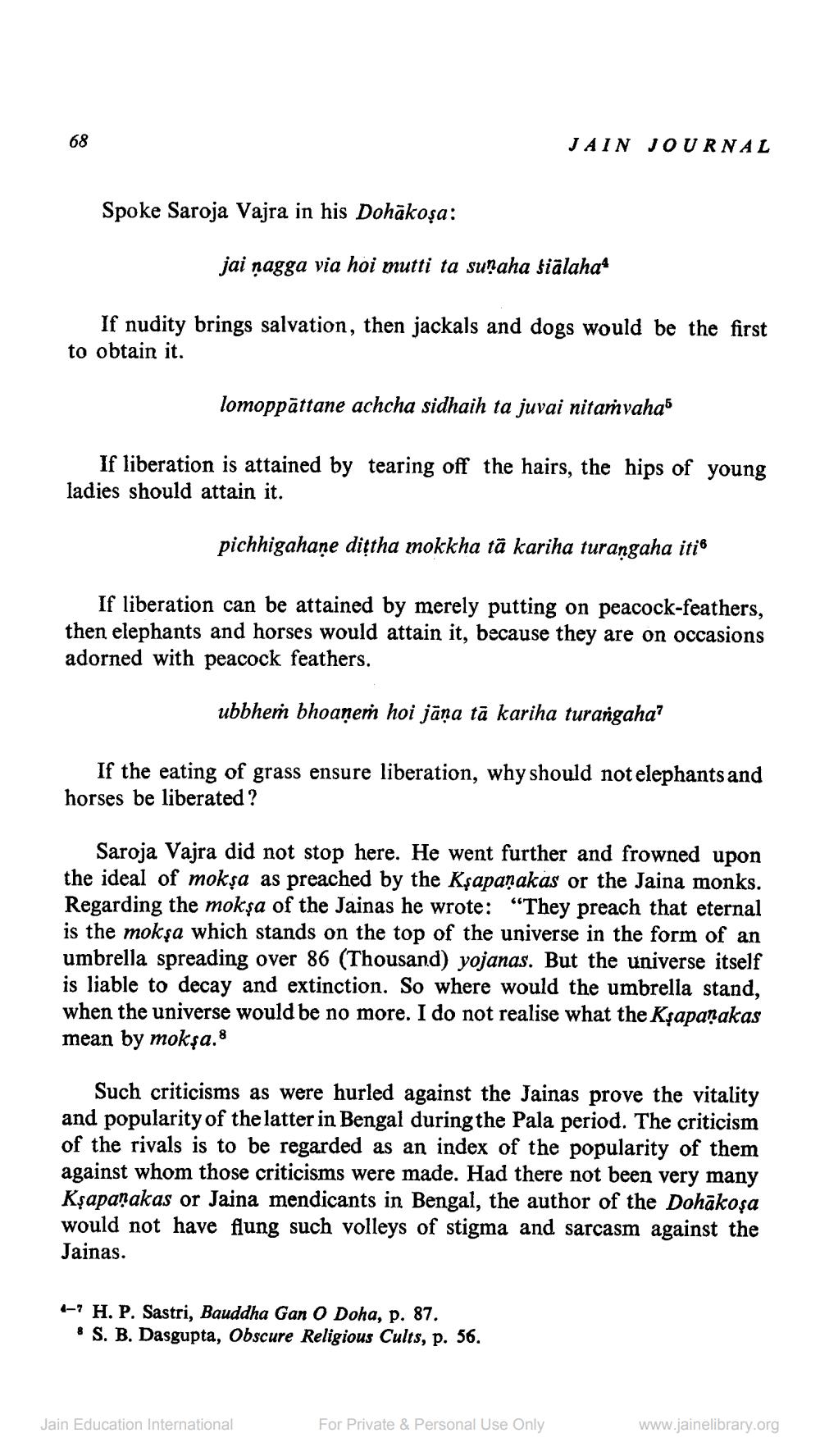________________
68
JAIN JOURNAL
Spoke Saroja Vajra in his Dohākoșa:
jai nagga via hoi mutti ta sunaha siālaha*
If nudity brings salvation, then jackals and dogs would be the first to obtain it.
lomoppāttane achcha sidhaih ta juvai nitamvaha5
If liberation is attained by tearing off the hairs, the hips of young ladies should attain it.
pichhigahaņe dittha mokkha tā kariha turangaha iti®
If liberation can be attained by merely putting on peacock-feathers, then elephants and horses would attain it, because they are on occasions adorned with peacock feathers.
ubbhes bhoaņem hoi jāņa tā kariha turangaha?
If the eating of grass ensure liberation, why should not elephants and horses be liberated ?
Saroja Vajra did not stop here. He went further and frowned upon the ideal of mokşa as preached by the Kşapaņakas or the Jaina monks. Regarding the mokşa of the Jainas he wrote: “They preach that eternal is the mokşa which stands on the top of the universe in the form of an umbrella spreading over 86 (Thousand) yojanas. But the universe itself is liable to decay and extinction. So where would the umbrella stand, when the universe would be no more. I do not realise what the Kşaparakas mean by mokşa.8
Such criticisms as were hurled against the Jainas prove the vitality and popularity of the latter in Bengal during the Pala period. The criticism of the rivals is to be regarded as an index of the popularity of them against whom those criticisms were made. Had there not been very many Kşapaņakas or Jaina mendicants in Bengal, the author of the Dohākoşa would not have flung such volleys of stigma and sarcasm against the Jainas.
4-7 H. P. Sastri, Bauddha Gan O Doha, p. 87.
S. B. Dasgupta, Obscure Religious Cults, p. 56.
Jain Education International
For Private & Personal Use Only
www.jainelibrary.org




